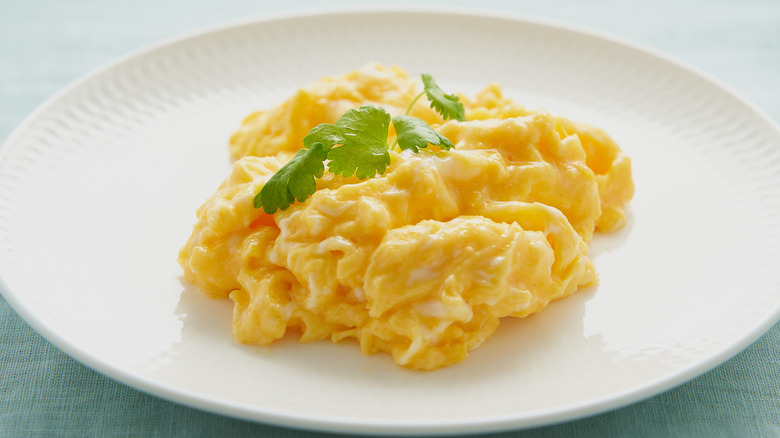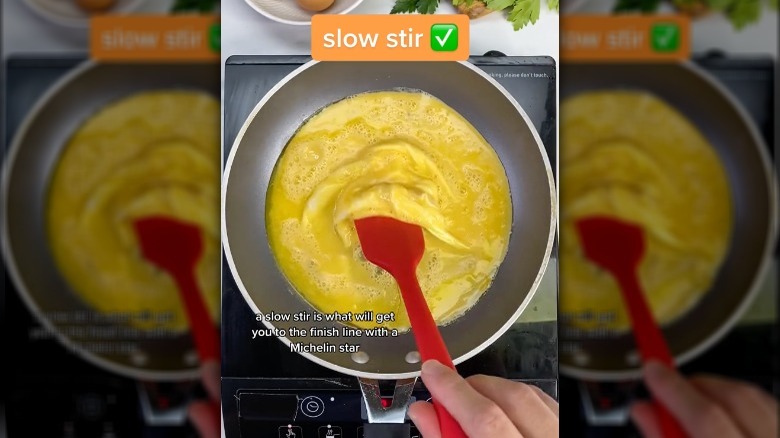The Best Stirring Method For Perfect Scrambled Eggs
Making scrambled eggs would seem to be one of the easiest cooking tasks you could perform. And, in some respects, it is. However, science determines what happens to eggs as they heat up. And science can be very precise. The proteins denature, amino acid bonds break down, and other links form to bind the eggs together in a different way. In fact, something as simple as how you stir scrambled eggs while they are cooking can have a huge impact on the final product.
When scrambling eggs, there is a tendency to do everything too quickly. For instance, a rapid scramble pulls the eggs apart and doesn't let them bond together after the amino acid chains break down from the heat. The result is a mushy-looking scramble that is wet, clumpy, and doesn't hold together well.
To get the best consistency, go easy with the scrambling. In fact, forget the name altogether and make "gently stirred" eggs — "nudged" eggs could be an even better description. The idea is to move your eggs slowly around the pan so the proteins have a chance to connect and create a scramble with some substance. Also, this gives you a chance to watch your eggs as they cook to make sure the water doesn't evaporate and leave you with a rubbery texture.
Other tips for making five-star scrambled eggs
If you want a little more help giving your scrambled eggs that ideal texture, TikTok user TastyOz has a few tips that can help you out, ranging from choosing a medium cooking temperature to maintaining a moderate stirring speed.
@tastyoz this tutorial will teach you how to cook the PERFECT scrambled eggs ✨🍳 #eggtok #eggs #scrambledeggs #cookingtutorial #cookingbasics #tasty #buzzfeedoz #tastyoz
Beyond those simple tips, there are a few other things you might not have considered. One key to getting those eggs just right is choosing the best spatula for the job. A silicon spatula is flexible and has rounded edges that allow you to get into the curve of the pan so no eggs are left behind. A silicone spatula is also non-stick, which makes it easy to slide beneath your eggs and give them the gentle stirring they deserve.
One final tip, a habit that might be hard to break: skip the milk. While some recipes insist you add it to get creamier eggs, when you actually ask a chef, the advice is a hard, "No!" Adding milk waters down the consistency, making your eggs easier to burn, while creating a rubbery texture. The rule of thumb for making the best eggs is less is more: fewer ingredients, less rigidity in your spatula, less heat, and less vigor when stirring. If you follow these simple guidelines, your scrambled eggs will wow every time.

